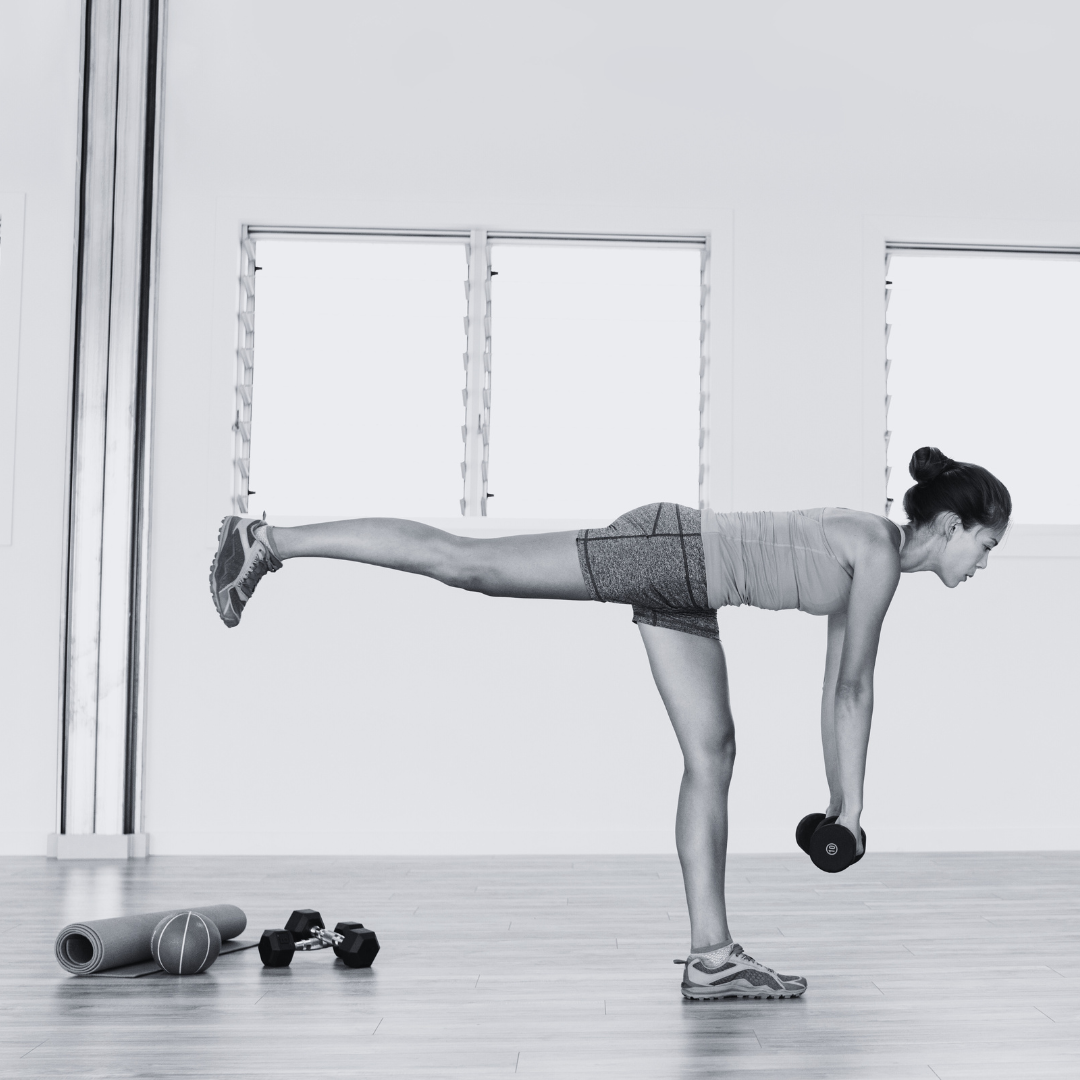The Single Leg Romanian Deadlift (SLRDL) is a highly effective exercise for targeting the posterior chain muscles, improving balance, and enhancing unilateral strength and stability.
While traditional Romanian Deadlifts focus on bilateral movement, the SLRDL shifts the emphasis to one leg at a time, challenging stability, coordination, and muscle activation. In this comprehensive guide, we'll explore the benefits, proper form, variations, and tips for mastering the Single Leg Romanian Deadlift.
Understanding the Single Leg Romanian Deadlift
The Single Leg Romanian Deadlift involves hinging at the hips while standing on one leg and lowering the weight (usually a dumbbell or kettlebell) towards the ground, maintaining a flat back and neutral spine. The non-working leg extends straight behind the body, acting as a counterbalance, while the hips and shoulders remain squared to the ground. This exercise primarily targets the hamstrings, glutes, and lower back, while also engaging the core and stabilizer muscles for balance and control.
Benefits of the Single Leg Romanian Deadlift
- Unilateral Strength: Targets each leg individually, addressing strength imbalances and promoting symmetrical muscle development.
- Improved Stability: Challenges balance and proprioception, enhancing stability in the ankles, knees, and hips.
- Core Activation: Engages the core muscles to maintain a stable torso position throughout the movement, promoting spinal health and injury prevention.
- Functional Movement: Mimics bending and lifting movements encountered in daily activities and sports, improving overall functional fitness.
- Increased Range of Motion: Enhances hip flexibility and mobility, which is crucial for activities like running, jumping, and squatting.
How to Perform the Single Leg Romanian Deadlift
Follow these steps to perform the Single Leg Romanian Deadlift with proper form and technique:
- Setup: Stand on one leg with a slight bend in the knee, and hold a dumbbell or kettlebell in one hand.
- Position: Keep your spine neutral, chest up, and shoulders back. Engage your core to maintain a stable torso position throughout the movement.
- Hinge: Initiate the movement by pushing your hips back while maintaining a slight bend in your standing leg. Lower the weight towards the ground while keeping it close to your body.
- Stretch: Lower the weight until you feel a stretch in your hamstrings, maintaining a flat back and neutral spine position.
- Drive: Press through your heel and contract your glutes and hamstrings to return to the starting position, bringing your hips forward and standing tall.
- Repeat: Perform the desired number of repetitions on one leg before switching to the other leg.
Common Mistakes to Avoid
To maximize the effectiveness of the Single Leg Romanian Deadlift and reduce the risk of injury, avoid these common mistakes:
- Rounding the Back: Keep your spine neutral and avoid rounding your back, which can increase the risk of lower back injury.
- Collapsing the Knee: Keep your standing knee stable and avoid letting it collapse inward or outward during the movement.
- Losing Balance: Focus on a fixed point in front of you and engage your core to maintain balance throughout the movement.
- Using Excessive Weight: Start with lighter weights and focus on mastering proper form before progressing to heavier loads to prevent injury and ensure optimal muscle activation.
Progressions and Variations
Once you've mastered the basic Single Leg Romanian Deadlift, you can progress to more challenging variations to further enhance strength and stability:
- Elevated Single Leg Romanian Deadlift: Perform the movement with the non-working foot elevated on a bench or step to increase the range of motion and stretch on the hamstrings.
- Single Leg Romanian Deadlift with Reach: Reach the free hand towards the ground or extend it forward for additional balance and core activation.
- Weighted Single Leg Romanian Deadlift: Hold heavier dumbbells or kettlebells to increase resistance and challenge strength development.
Incorporating Single Leg Romanian Deadlifts into Your Routine
- Frequency: Include Single Leg Romanian Deadlifts in your lower body or full-body workout routine 1-2 times per week, depending on your training goals and program structure.
- Reps and Sets: Perform 3-4 sets of 8-12 repetitions per leg for hypertrophy (muscle growth) and 4-6 sets of 4-8 repetitions per leg for strength.
- Pairing with Other Exercises: Combine Single Leg Romanian Deadlifts with other lower body exercises like squats, lunges, and step-ups for a comprehensive lower body workout.
Conclusion
The Single Leg Romanian Deadlift is a highly effective exercise for targeting the posterior chain muscles, improving balance, and enhancing unilateral strength and stability. By mastering proper form and technique, avoiding common mistakes, and incorporating variations into your routine, you can reap the numerous benefits this exercise has to offer.
Whether you're a beginner or an experienced lifter, the Single Leg Romanian Deadlift is a valuable addition to any strength training program, helping you build a strong, stable, and resilient lower body.
Recommended Gym Accessories
When incorporating Romanian Deadlifts into your workout routine, having the right gym accessories can enhance your performance and comfort:
- Lifting Belt: Provides core stability and support, especially when lifting heavy loads during Romanian deadlifts. Our lifting belt is a premium choice for deadlifts.
- Lifting Straps: Assist with grip strength, particularly useful when using heavier weights or if grip strength is a limiting factor. We offer standard or figure 8 lifting straps to help with this exercise.
- Elevated Platform: Optionally stand on a raised platform or step to increase the range of motion and stretch on the hamstrings during the exercise.
- Chalk: Helps improve grip by reducing moisture and enhancing friction between your hands and the barbell or dumbbells.
- Weightlifting Gloves: Provide grip support and prevent the barbell or dumbbells from slipping during the exercise, ensuring a secure hold.
- Wrist Wraps: Offer additional wrist support, particularly useful if you have wrist discomfort or mobility issues. Check out our wrist wraps range for a full look on the designs and options available.







